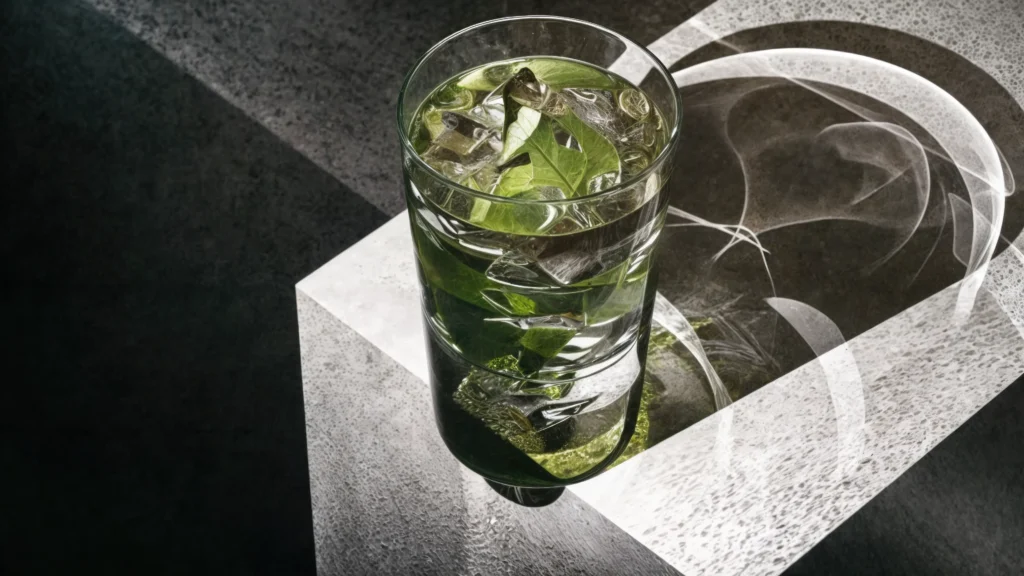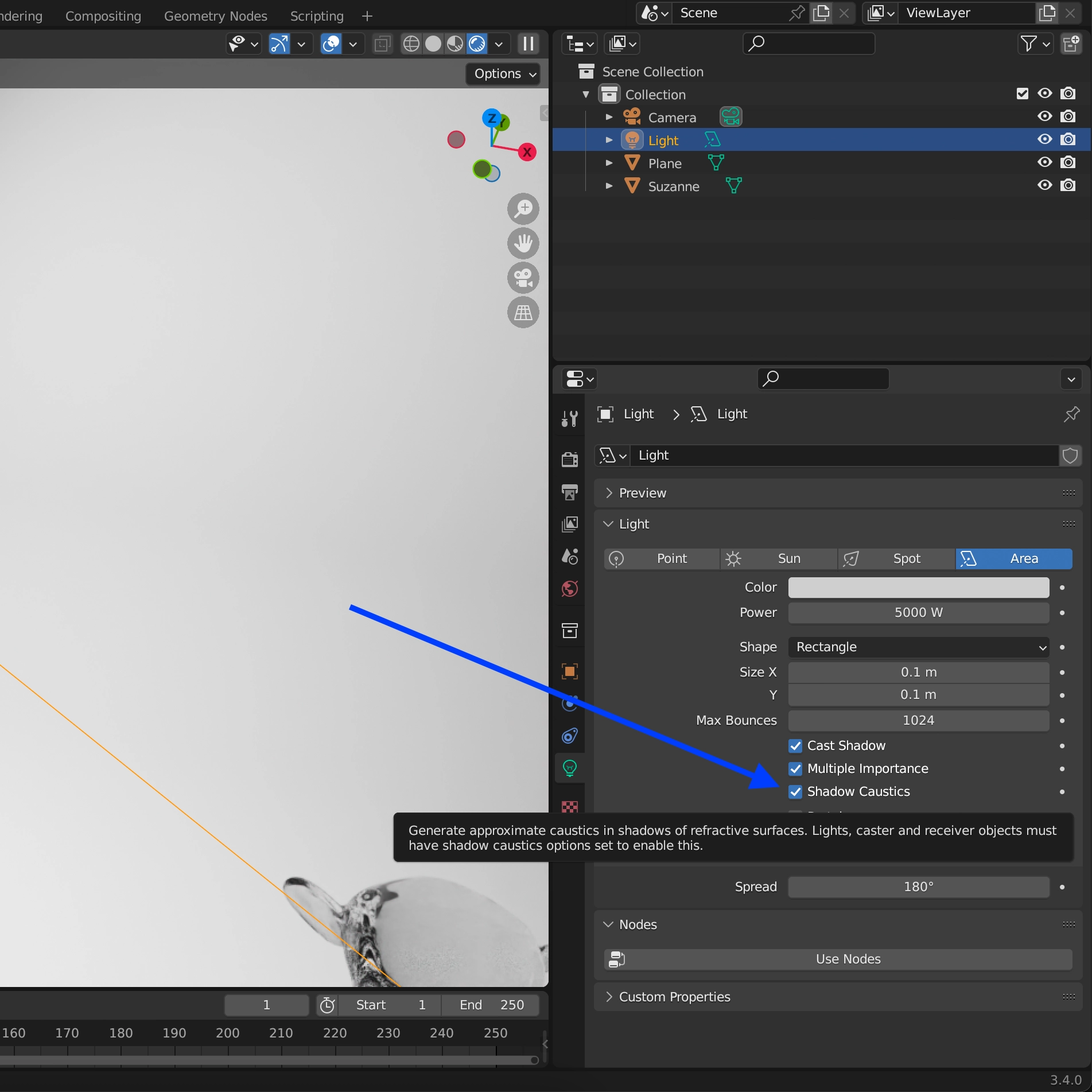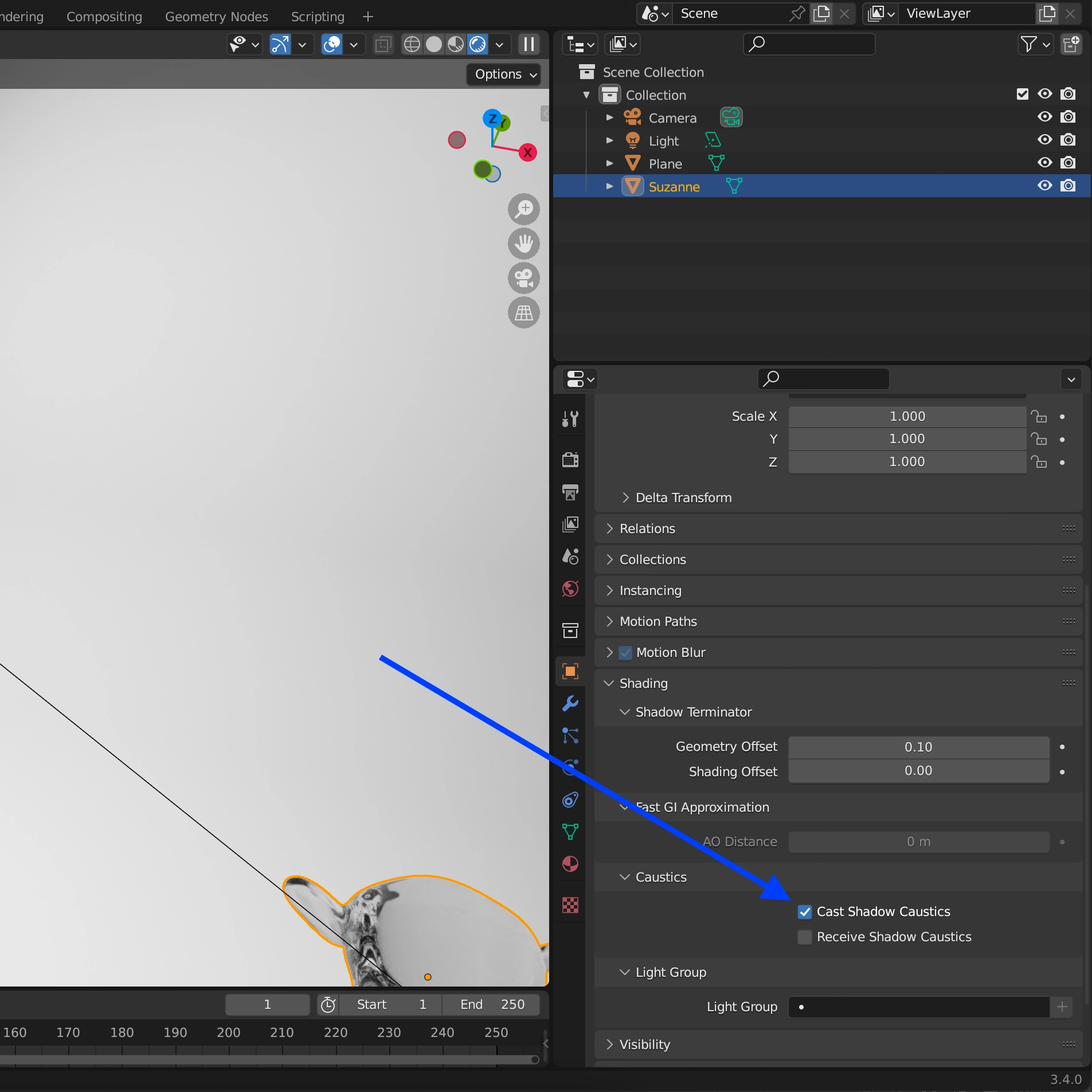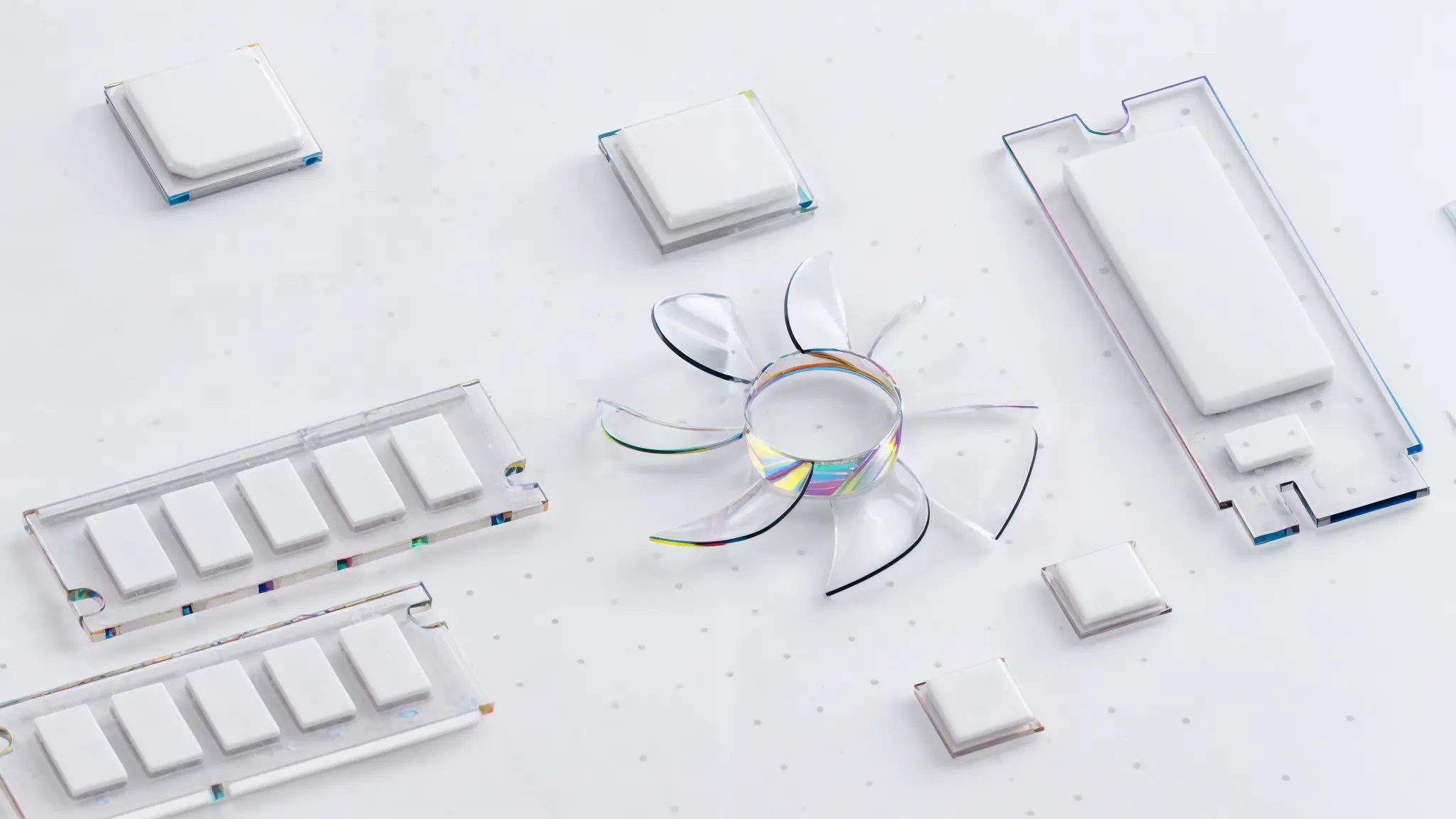How
to create
Since Blender Version 3.2 we now have the possibility, to create Shadow Caustics which can dramatically improve scenes with a lot of Glass or water without a lot of afford or a high increase in render time. Here you have a guide to find out, on how it is done.
Table of Contents
Caustics in Blender
What are Caustics
Caustics refer to the light that gets focused through glass or water, they play a significant role in illuminating an image. In computer graphics, a caustic is any contribution of light that originates from a light source, reflects or refracts off a specular surface, and is ultimately observed by the eye or camera.
Remember that even a window, which is made of glass, bends light. In fact, any light that passes through a window is refracted.

In simple terms, if light reflects off a glossy surface and then illuminates a rough surface, it creates a caustic effect. This indicates that in real-life scenarios, caustics play a significant role in the amount of light present in a scene.
What you need in your Scene to work
To create caustics, you need at Least 3 Objects.
- An Object which needs to be transmissive, meaning either the Glass BSDF or the Principled BSDF with Transmission enabled.
- Object to receive the Caustics,
- Light source, which needs to be a Light Object. An Object with an emissive Material won’t work.
Activate Caustics
You need, to activate This feature on every object, you want to be involved. The idea behind this is, to save some resource on these otherwise extremely resource intensive calculations.
To activate it for the light, you have to check the Box Shadow Caustics in the Object Data Properties while the Light is selected.

To activate the Object which should cast the caustics, you need to select the Object and tick the Cast Shadow Caustics box, which you can find in the Object Properties Tab under Shading > Caustics.

To activate the Object which should receive the caustics, you need to select the Object and tick the Receive Shadow Caustics box, which you can find in the Object Properties Tab under Shading > Caustics.

Provoke Caustics
To get more visible and more defined Caustics, make the light source small and strong. In some cases, it also makes sense to increase the amount of light bounces.
To activate it for the light, you have to check the Box Shadow Caustics in the Object Data Properties while the Light is selected.
Here you can see the difference between a Point Light with the size of 0.5 meters (on the left)and 0 meters (on the right).
In general, the smaller and stronger a light sources is, the more defined the caustics will be.
The Type of light also has an Influence on how caustics will look. The most noticeable results seemed to be achieved by using the Spotlight.









Render Caustics! “Computer says no”
Great article thanks. I love the design of the webpage too.